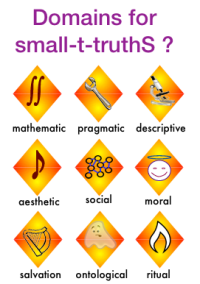 In my previous post, I illustrated various stances people take toward capital-T-Truth. All of these models are loaded with problems. The largest problem, though, is that there actually is no such thing called “Truth” with a capital “T”!
In my previous post, I illustrated various stances people take toward capital-T-Truth. All of these models are loaded with problems. The largest problem, though, is that there actually is no such thing called “Truth” with a capital “T”!
Instead of one all-encompassing Truth, the word is only accurately used with a small-t to describe any one of the many domains. And even then the use is fuzzy.
To the right I have thrown up a few domains where people speak about truth — if applicable at all, we need to keep the “t” small. Can you think of more?
Below is an explanation of these Types of truthS:
- Aesthetic Truth: subjective sense of what is beautiful and pleasant to you. Symbol: musical note. Here also falls art, literature, poetry, dance, styles of all sort and tastes of all sorts.
- Mathematical Truth: consistent logic and math. Symbol: integrating sign used in calculus.
- Pragmatic Truth: what works for you. Symbol: a wrench — tools that do the job
- Descriptive Truth: observationally verifiable information. Symbol: a microscope
- Moral Truth: personal values for behavior. Symbol: a good moral person with a halo (the inner feeling of doing something right).
- Salvation Truth: subjective ideas on how to live forever. Symbol: a harp – as symbol for whatever you imagine doing for eternity.
- Ontological Truth: what you feel exists. Symbol: A ghost. Some believe in ghosts, fairies and gods. Some believe in collective unconsciousness and the divine.
- Social Truth: your intuitive bonds and rules for interacting with your in-groups and out-groups. Symbol: a network of connected circles of individuals.
- Ritual Truth: actions without necessary moral, social or pragmatic consequences which you feel are important to make. Symbol: a flame. I am thinking of Vedic or Hebrew sacrifices. These could be religious like Christian communion or as mundane as how many times you wash your hands to carrying a lucky rabbit foot.
__________
Related Posts of mine:
- Religion Defined: A syndrome definition. Here you will find some of the categories of truth that religions often place under their umbrella.
- Modular God: Again, the different aspects of the mind held inside the abstract notion of “God”


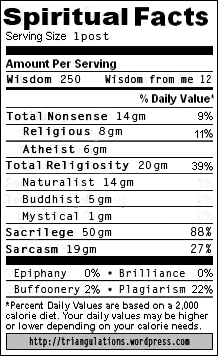



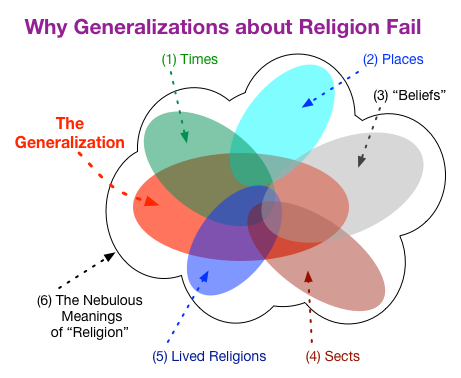


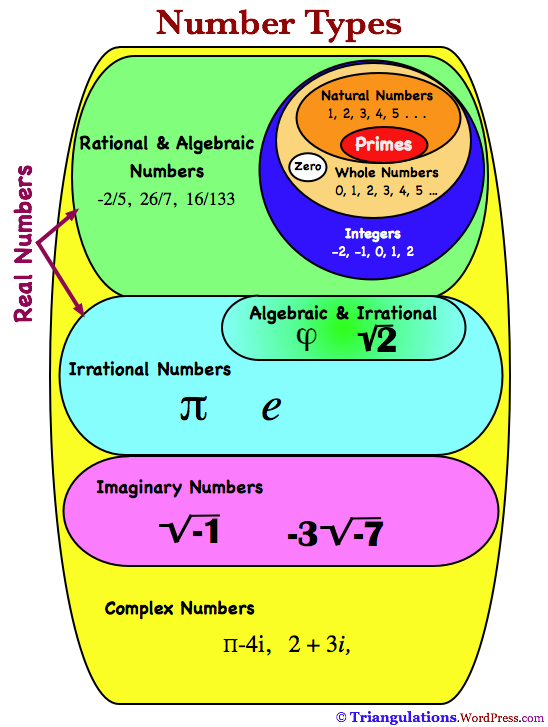
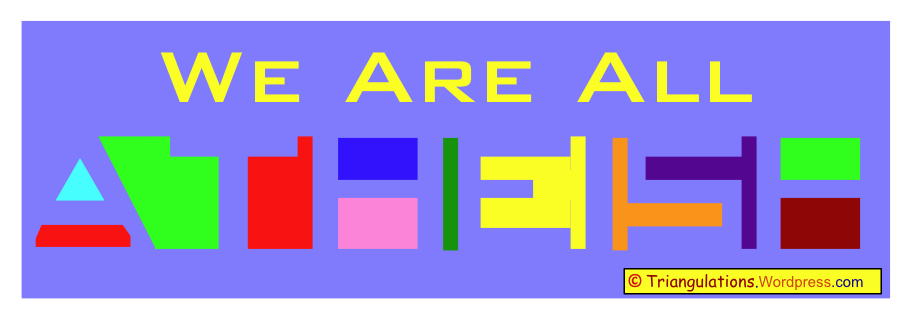

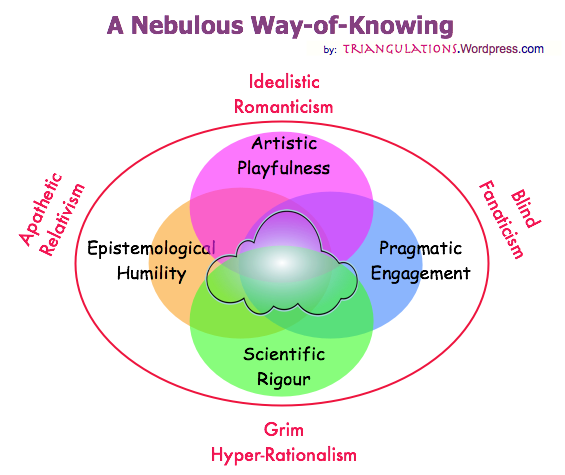






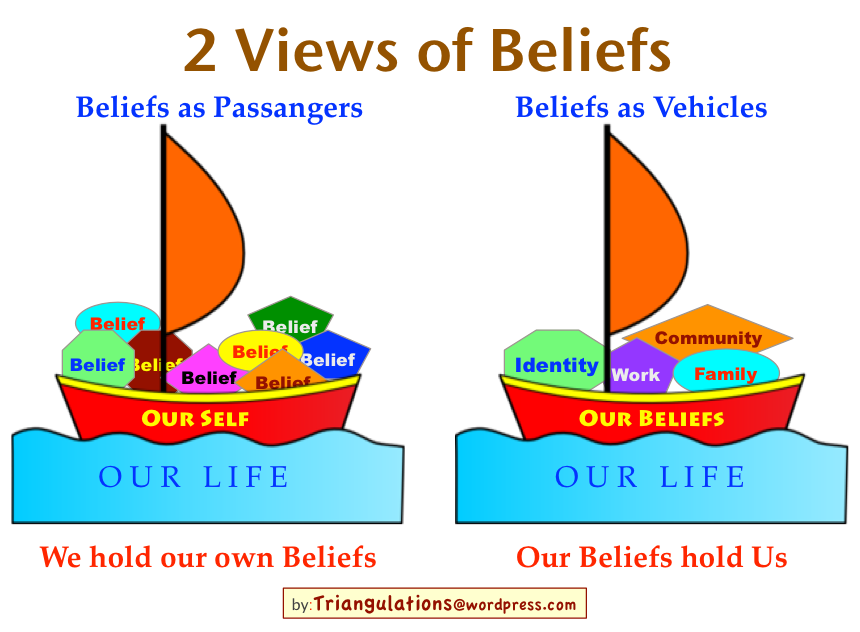







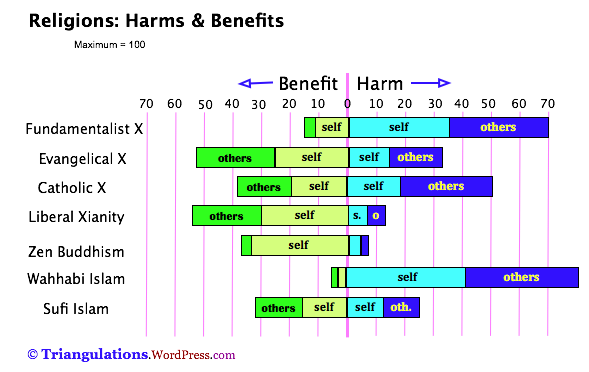



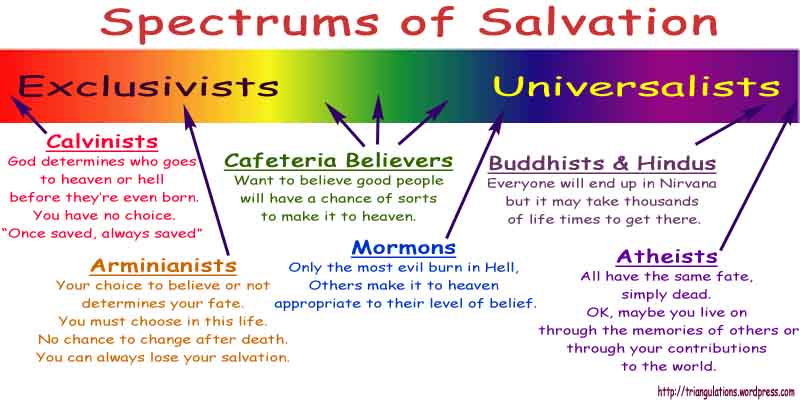




these are fantastic, an excellent dove-tail from your last post. the only one i would add would be “there is no diamond” which would be the #4 from the previous post. the symbol would be a circle with line through it over the diamond.
@ Zero,
Thank you. You would not believe how much time it takes to Photoshop all those!
Interesting about using the “Null” symbol for “No Truth”. I’ll have to think about that. I think all people have some subset of these truths and even Nihilists would admit that. Thus this post undercuts the nihilists illustrated in #4 of the first post. So I am not sure how it would fit. I will have to think about it further. Thanks for reading.
Or there is both a diamond and no diamond, to which there is no contradiction found.
@ Kyle,
Yeah, just like my comment to Zero, there is indeed all sorts of truths with small “t”s. To try and trip out in Non-Dualism Land on that one is a huge mistake. Here I am representing types of truths — both fictional and real. My previous post was for folks who want to believe in a Truth with a capital “T” — whether it is a Nagarjuna Truth Gem or not — it is still a capital “T” entity which I find silly to talk about in many ways and hopefully my posts illustrate some of that silliness.
Note: for non-Buddhists, “Nagarjuna” wasa Buddhist philosopher — see the wiki article if you are curious.
@Sabio – Yes, the big T Truth is silly to talk about, but it is not seperate from all these small t truths you describe. I see what you are getting at here, and I think you nailed a lot of the relative categories. What I am getting at is, even as individuals, all these small truths eventually cross paths and the lines can get blurred. I do appologize for my obtuseness, but I know you realize the background I come from. 🙂
@ Kyle (who is Buddhist — for readers)
It seems you got part of what I was saying. But I am also saying that there is no “Big Truth” to talk about. I have no idea what that would mean. Look at all the categories above. How could all these small truths cross paths when half of them are subjective and several are imaginary. My point, talking about a “Big Truth” is just like Christians talk of God in many ways.
Great post! These icons made me laugh out loud.
It seems like some of these truths are subordinate to other ones, and some are (potentially) contradictory to one another.
I’ve always taken ontological truth – insofar as it is possible – as the overarching umbrella “truth” that everything else would fall under. Of course it is telling how you define it: what you feel exists. This is why I think ontological truth is such a problem. It seems to be the status that everyone wants to claim, because no matter what sort of truth one is speaking of, it must have truth status when presented as “it is the case that x”. And of course when a ritual truth has ontology on its side, a descriptive or pragmatic truth must yield to it, right? : )
@ Brandon
Thanx. Absolutely, I something can be viewed as having many truths: a ritual can that aesthetic truth, practical truth and felt ontological consequences.
I like how you phrased, “[ontological truth]seems to be the status that everyone wants to claim.”
Yes, both for their gods and for their selves.
Just a small note on nihlists. I am under the impression that it would be mistaken to think that nihlists do not believe in any truth what so ever. My understanding of nihlists is that they do not believe in an ETHICAL truth. They would certainly believe E=mc2² for example. But they would not say that saving someones life is in anyway a more moral action than taking someones life. If you go and kill a 4 year old child you can not say that you have done soemthing wrong. The nihlists would say you might have done something right because if the child had lived longer the child mght have lived a lfie of misery and disapointment anyways. You can not say that killing the child was th e correct thing either. One just can not make OBJECTIVE MORAL distinctions. A person can cerianly make objective disctinctions for example is the child alive or dead. A nihlist wouild recognize one of those stated conditions (alive or dead) as true.
@ Curt
Absolutely right. I think you are referring to my comment to Ghost which was sloppy. My next post will make the distinction more explicit. The point is: The only meaningful discussion is to talk about a domain of “truth” and not pretend that a fuzzy thing like Capital T Truth (CTT) exists.
Thanx for your correction.
The talk about “aesthetic” truth reminds me of Keats, who said “Beauty is truth, truth beauty, that’s all you need to know”. I disagree with him, but he was basically asserting the existence of a capital B Beauty and capital T Truth; *and* asserting an equivalence between the two.
Although I disagree with him, I find it to be poetic and worthwhile.
When you use a phrase like “pretend that a fuzzy thing like Capital T Truth (CTT) exists” you’re making an ontological truth claim: you are claiming that you are the one in possession of an ontological truth — the truth that “Capital T Truth” does not exist (anyone who disagrees is “pretending”). You are also implicitly affirming that it’s important to be truthful about the ontological status of CTT, which requires a level of truth-chauvinism that exceeds CTT. To defeat CTT, you must appeal to people’s love of “truth”. I’m inclined to agree, but I think the ontological status of “Capital T Truth” is itself fuzzy.
In this specific case, I really liked Jacques Derrida’s concept of the “undeconstructable”. He talks about this in respect to “Truth”, but spends more time talking about it with respect to “Justice” (with a capital “J”). We humans are limited, and can never hope to achieve perfect Justice. But we pursue little-j justice, with the humility and knowledge that we’ll never achieve big-J Justice (and, indeed, we often perpetrate injustice in the name of Justice). Nevertheless, Justice is undeconstructable. Big-J Justice is still a worthwhile endeavor.
Likewise, a person can be affiliated with the *idea* of Truth, and strive to always attain towards Truth, while being aware that he will often unwittingly perpetuate untruth in the endeavor. That doesn’t defeat big-T Truth (which is undeconstructable). It just says that none of us probably *have* big-T Truth.
There is no defeater of big-T Truth or big-J Justice. To defeat either, you need bigger-T or bigger-J (which just affirms what you’re trying to defeat). Instead of defeating them, you must make a brute decision to be a chauvinist, or non-chauvinist, towards either.
I need to smoke something “good” to get into this one. Sorry, I have no comments at the present time, since well, I don’t smoke at all.
M-ental
A-buse
T-o
H-umans